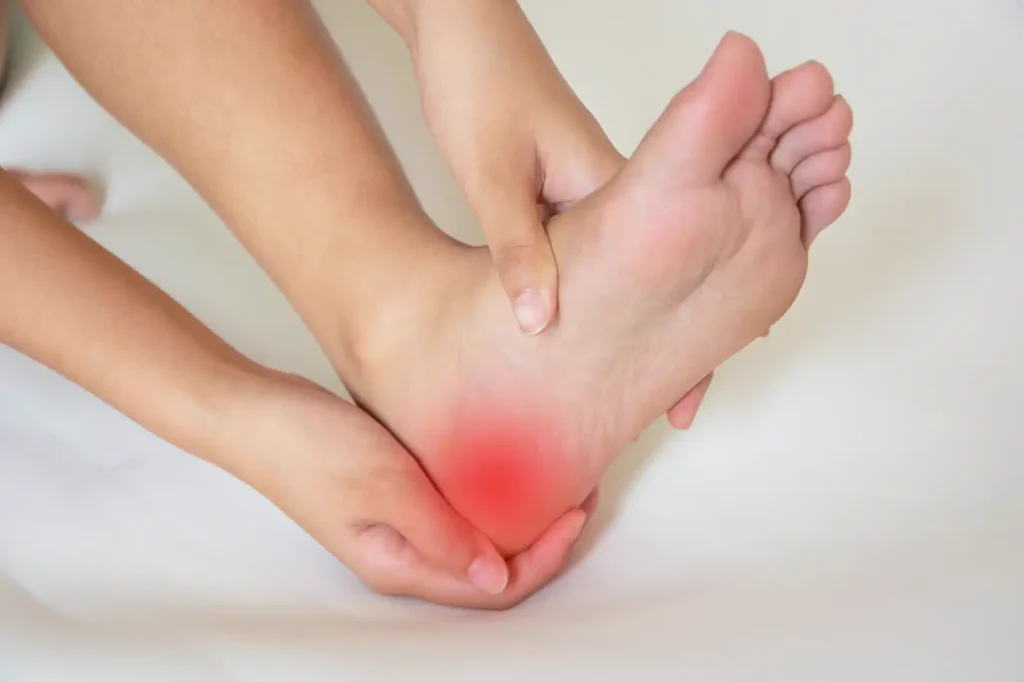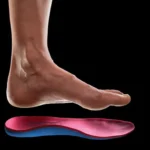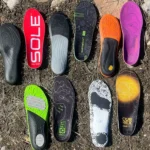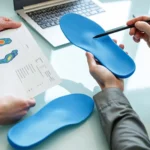Backed by expert experience and Google EEAT principles, we break down everything from the best insole types to how long it takes to feel relief. Whether you’re active, aging, or on your feet all day, the right orthopedic insoles can dramatically improve your comfort and foot health.
Orthopedic Insoles for Heel Pain:
Heel pain can be a real showstopper. Whether you’re an active person, on your feet all day at work, or just love your daily walks when your heels hurt, everything hurts. And let’s face it, no one wants to limp through life. One of the most effective, non-invasive solutions? Orthopedic insoles for heel pain. These specialized inserts don’t just offer temporary comfort they correct alignment, distribute pressure evenly, and help reduce inflammation at the source of the problem.
I’ve personally used orthopedic insoles after struggling with plantar fasciitis and heel spur pain for months. Through trial and error (and a few failed drugstore insole experiments), I learned the difference between generic inserts and real, orthopedic-grade insoles made for heel pain relief. This guide will walk you through everything I wish I knew at the beginning how they work, who needs them, and how to choose the best pair.
Custom orthotics offer tailored support for severe conditions but quality OTC insoles work well for mild to moderate heel pain.
What Are Orthopedic Insoles and How Do They Help Heel Pain:
Orthopedic insoles are footbeds crafted to support proper foot biomechanics. Unlike basic over-the-counter insoles, they are made with medical-grade materials and are often recommended by podiatrists for people with foot conditions like plantar fasciitis, heel spurs, Achilles tendinitis, and flat feet.
Heel pain usually stems from excessive strain on the plantar fascia (the ligament connecting your heel to your toes), poor arch support, or improper gait mechanics. Orthopedic insoles address these issues by redistributing weight, improving posture, and providing shock absorption where your heel hits the ground the hardest. They essentially work to cushion the impact and support your arch so the heel doesn’t bear the full brunt of your body weight.
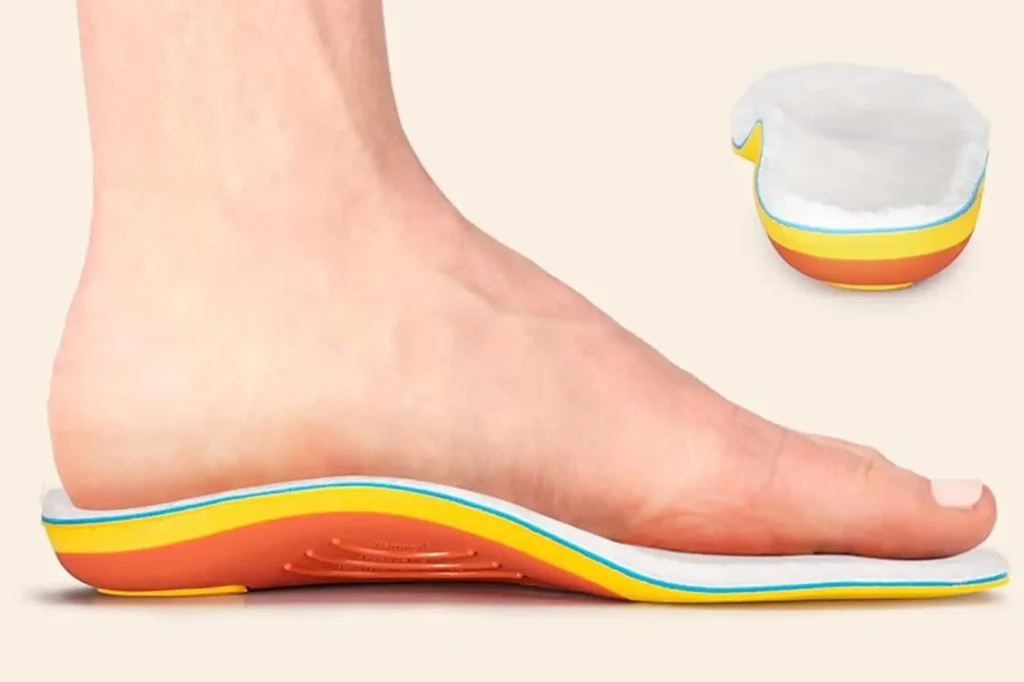
Common Causes of Heel Pain That Orthopedic Insoles Can Relieve:
Heel pain isn’t always caused by one thing it can come from lifestyle factors, medical conditions, or biomechanics. One of the most common causes is plantar fasciitis, which feels like a stabbing pain, especially during your first steps in the morning. Other common causes include heel spurs, stress fractures, Achilles tendon issues, and even nerve entrapment.
Orthopedic insoles help by aligning your foot properly and offloading pressure from the inflamed or irritated areas. If you have flat feet or high arches, you’re already at a higher risk for heel pain, and insoles designed for those foot types can make a world of difference.
How Orthopedic Insoles Work to Reduce Heel Pain:
The science behind orthopedic insoles lies in how they interact with your foot mechanics. A quality insole offers arch support, deep heel cups, and cushioned midsoles to reduce tension on the plantar fascia. When your foot is properly aligned, your heel doesn’t absorb impact incorrectly and this significantly reduces pain over time.
They also help you walk more naturally. With features like motion control, metatarsal pads, and dual-layer foam, they can correct overpronation or supination (rolling of the feet). That means your body weight gets evenly distributed across your entire foot instead of hammering down on your heel.
Who Should Use Orthopedic Insoles for Heel Pain:
If you feel persistent pain in your heel, especially in the morning or after standing long hours, orthopedic insoles may be for you. Even kids and teens experiencing growth spurts can benefit from the right type of insole. If left untreated, heel pain can lead to compensation injuries in your knees, hips, or back. So catching it early with supportive insoles is a smart move.
- People with plantar fasciitis or heel spurs
- Runners and athletes
- People with flat feet or high arches
- Seniors with deteriorating foot padding
- Nurses, retail workers, teachers anyone on their feet all day
Types of Orthopedic Insoles: Which One Should You Choose:
Orthopedic insoles aren’t one-size-fits-all. They come in a variety of shapes, materials, and levels of firmness. Choosing the right insole depends on your foot type, level of activity, and the severity of your heel pain. I always recommend starting with a podiatrist’s advice or going for a reputable OTC brand that offers heel-focused support.
- Custom Orthotics – Designed by a podiatrist for your foot shape. Most effective but expensive.
- Over-the-Counter Orthopedic Insoles – Affordable and good for mild to moderate heel pain.
- Gel or Silicone Insoles – Great for extra cushioning but may lack arch support.
- Rigid Orthotic Insoles – Built for arch support and foot alignment, especially in severe cases.
Key Features to Look for in Orthopedic Insoles for Heel Pain:
When shopping for the best orthopedic insoles, here are the must-have features. Some brands also offer orthopedic insoles for specific shoes, like running shoes, work boots, or dress shoes, so you can find the right match for your lifestyle.
- Deep Heel Cup – Cradles the heel and controls motion
- Firm Arch Support – Distributes pressure away from the heel
- Dual-Layer Cushioning – Offers shock absorption for long-term comfort
- Anti-Microbial and Moisture-Wicking Material – Keeps feet fresh and prevents blisters
- Trim-to-Fit Design – Ensures the insole fits properly in your shoes
How Long Do Orthopedic Insoles Take to Work:
Relief can be felt almost immediately for many people, but for chronic heel pain conditions like plantar fasciitis, it may take 1–2 weeks of consistent use to notice real improvement. It’s important to wear your insoles daily, especially in shoes you wear for extended periods.
Don’t forget a break-in period is normal your foot might feel slightly uncomfortable for the first few days as it adjusts to the corrected alignment. Stick with it. Trust me, the results are worth the commitment.
When to See a Doctor or Podiatrist:
If your heel pain persists after using orthopedic insoles for 3–4 weeks, or if you experience swelling, bruising, or sharp, burning pain, it’s time to see a podiatrist. You might need custom orthotics or further treatment like physical therapy or imaging to rule out conditions like a ruptured plantar fascia or nerve compression.
Orthopedic insoles are a powerful first step, but they’re not a cure-all if the underlying issue is more severe.
FAQ
Most frequent questions and answers
Yes, they reduce pressure on your heel and support your arch to relieve pain from plantar fasciitis, heel spurs, and poor foot alignment.
Custom orthotics offer tailored support for severe conditions but quality OTC insoles work well for mild to moderate heel pain.
Start with 1–2 hours and gradually increase to full-day wear for best results. Daily use improves foot alignment and heel pain relief.
Conclusion:
Whether you’re dealing with plantar fasciitis, heel spurs, or just daily strain from standing or walking, the right insole can make a dramatic difference. In conclusion, orthopedic insoles for heel pain are one of the most effective, non-invasive solutions to relieve discomfort and support long-term foot health. They provide crucial arch support, heel cushioning, and alignment correction to reduce pressure on the heel. By choosing the right type of orthopedic insole and wearing it consistently, you can significantly improve your comfort, mobility, and overall quality of life. Don’t wait your feet deserve the support they need to keep you moving pain-free.


